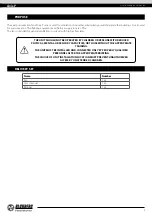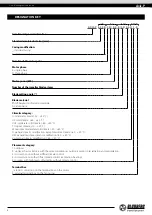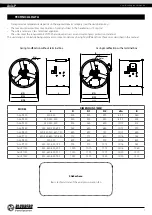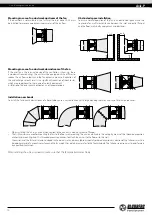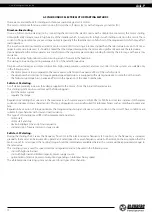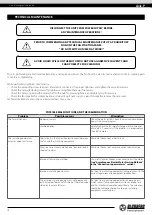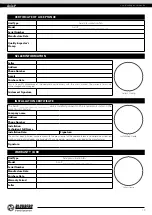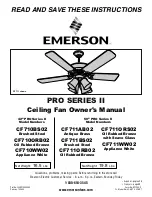
ASYNCHRONOUS ELECTRIC MOTOR STARTING METHODS
There are several methods for starting asynchronous squirrel-cage electric motors.
The most common methods are: direct-on-line (DOL), with a soft starter (SS) or with a frequency converter (FC).
Direct-on-line starting
In case of direct-on-line starting (i.e. by connecting the motor to the electric mains with a simple line contactor), the motor starting
time significantly increases due to high inertia of the impeller, which, in turn, results in high in-rush starting currents in the circuit. These
currents of long duration may cause voltage slumps (especially if the feed line section falls short of the requirements), which may affect
load operation.
The in-rush current consumed by an electric motor in case of DOL starting is 5-8 times larger than the rated value (or even 10-14 times
larger in some rare instances). It should be noted that the torque developed by the motor also significantly exceeds the rated value.
Upon energisation the motor operates as a transformer with a squirrel-cage secondary winding formed by the rotor cage with a very low
resistance.
The rotor develops high induced current causing a rush of current in the feed line.
The startup torque during starting averages 0.5-1.5 of the rated torque value.
Despite such advantages as simple construction, high startup current, quick start and low cost, direct-on-line systems are suitable only
in the following cases:
• the motor power is low compared to the mains power which limits the adverse effect of the rush of current
• the driven mechanism does not require gradual speed build-up or is equipped with a damping device to smooth out the inrush
• the high startup torque has no adverse effects on the operation of the driven mechanism
Soft start. SS starting.
A soft starter gradually increases the voltage supplied to the motor – from the initial to the rated value.
This starting system can be used to meet the following goals:
• limit the motor current
• regulate the torque
Regulation by limiting the current sets the maximum in-rush current equal to 300-400 % (or 250 % in some rare instances) of the rated
current and reduces torque characteristics. This type of regulation is especially suited for turbomachinery such as centrifugal pumps and
fans.
Regulation by variation of torque optimizes the torque during startup and reduces in-rush current in the circuit. These conditions are
suitable for mechanisms with constant load resistance.
This type of soft starting may differ in the implementation pattern:
• motor start
• motor start and stop
• device bridging at the end of start sequence
• start and stop of several motors in stage circuits
Soft start. FC starting.
During the starting the FC raises the frequency from 0 Hz to the electrical mains frequency (50 or 60 Hz). As the frequency is increased
gradually, the motor can be assumed to operate at its rated speed for a given frequency value. Furthermore, on the assumption that the
motor runs at its rated speed the nominal torque should be immediately available whereas the current will be approximately equal to
the rated value.
This starting system is used for speed control and regulation and can be used in the following cases:
• start with high-inertia load
• start with high load and limited-capacity power supply source
• optimization of electric power consumption depending on turbomachinery speed
The aforementioned starting system can be used for all types of mechanisms.
www.blaubergventilatoren.de
Axis-p
12
Содержание AXIS-P Series
Страница 1: ...Axial pressurisation fan USER S MANUAL EN Axis P...
Страница 18: ...www blaubergventilatoren de Axis P 18...
Страница 20: ...www blaubergventilatoren de B118EN 05...





